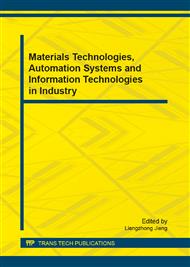p.46
p.53
p.57
p.62
p.67
p.73
p.81
p.85
p.91
Integrated Evaluation on Soil Nutrients in Spring Maize (Zea mays) Field Subjected to Limited Irrigation
Abstract:
An experiment was conducted to explore the integrated evaluation on soil nutrients in spring maize field subjected to limited irrigation (LI) in oasis region. The soil organic matter (SOM), soil total and available nitrogen (STN and SAN) and phosphorus (STP and SAP), and soil available potassium (SAK) in 0~40 cm increment at harvest of maize subjected to LI were selected as the evaluation factors to calculate the weighing coefficient of each soil nutrient and the IEI for soil nutrients using the membership function in fuzzy mathematics. At maize harvest, differences were not significant (p>0.05) in SOM, STN, STP, SAP, and SAK within 0~40 cm increment among treatments and CK, but significant difference (p<0.05) was found in SAN, with the maximum SAN maintained in MI5, which was respectively 187.3%, 96.8%, and 41.2% higher over MI2 valued the minimum, MI1, and CK. The IEI was improved by 12.4% to 22.3% in all the other treatments and CK compared to the minimum marked in MI4, with the maximum valued in MI3 treatments. Therefore, after one year experiment, the optimized irrigation management was maintained in MI3 treatment due to its maximum IEI in all the LI regimes.
Info:
Periodical:
Pages:
67-72
Citation:
Online since:
August 2013
Authors:
Price:
Сopyright:
© 2013 Trans Tech Publications Ltd. All Rights Reserved
Share:
Citation:


